Chondrichthyes
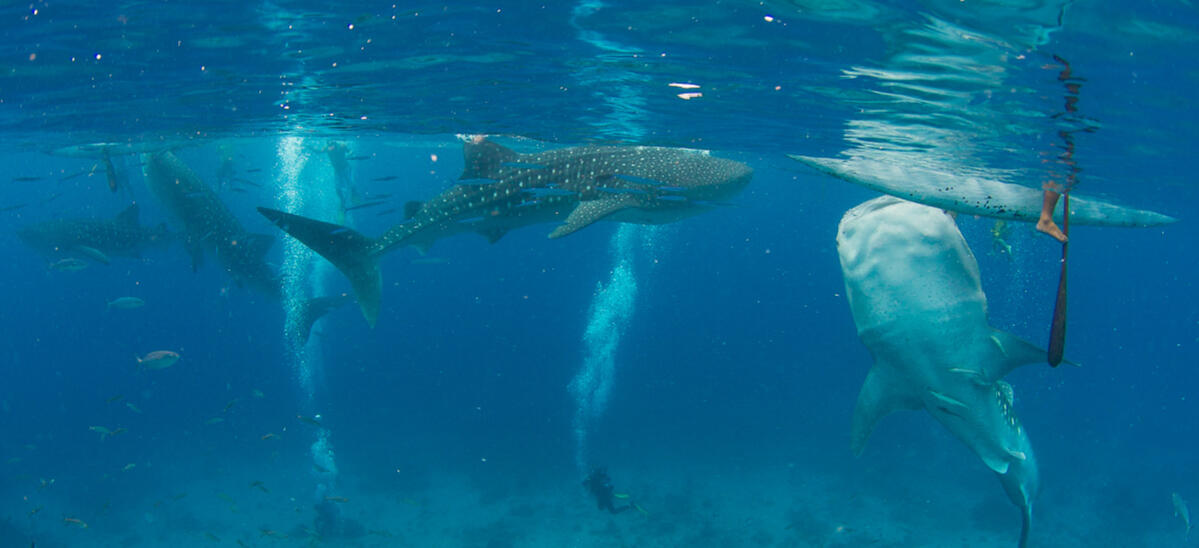
Rhincodon typus getting fed in Tan-awan, Oslob, Cebu
Chondrichthyes is considered the oldest extant group of jawed vertebrates, diverging from a common ancestor with Osteichthyes (commonly referred to as bony fish) about 420 million years ago. Chondrichthyans have an excellent fossil record based on deposits of dental record, although skeletal fossil is rare due to their cartilaginous skeleton that does not fossilize into bone.
Shark skin is covered by toothlike dermal denticles that help the shark swim faster by reducing drag. Some species also use them as a defense mechanism. All sharks are carnivorous and most are solitary, only coming together to mate. In mating, the male inserts one or both claspers into the female's cloaca.
Rays, on the other hand, mostly prey on animals near the seafloor. Some swim at or near the surface, with certain species even jumping above the water.
Most chondrichthyans are marine, although habitats vary per species. Some stay permanently in fresh water, while others may travel to estuaries or rivers. Most can be found in shallow waters, although some are present in the deep sea.
There exist both oviparous (in approximately 42% of species and all members of taxon Holeocephali) and viviparous chondrichthyans.
Many are rapidly declining, particularly sharks sought after for their fins. The mostly threatened or endangered statuses of chondrichthyans can be attributed to their slow maturation process and low reproductive rates.
Examples of Chondrichthyes
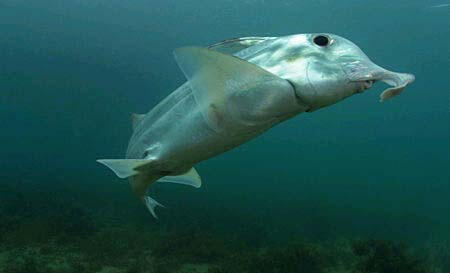
Callorhinchus milli
Comprised of two subclasses Holocephali (chimaeras) and Elasmobranchii (sharks, rays, skates, and sawfish), class Chondrichthyes has some 1200 species. The only extant order in Holocephali is Chimaeriformes, known as chimaeras.
Found off southern Australia and New Zealand, Callorhinchus milii (shown above) is also known as the Australian ghostshark. It is recognizable by its protruding snout with a club-like structure used to search for prey. It is silvery white in color with a smooth body.
Chondrichthyes in the Philippines
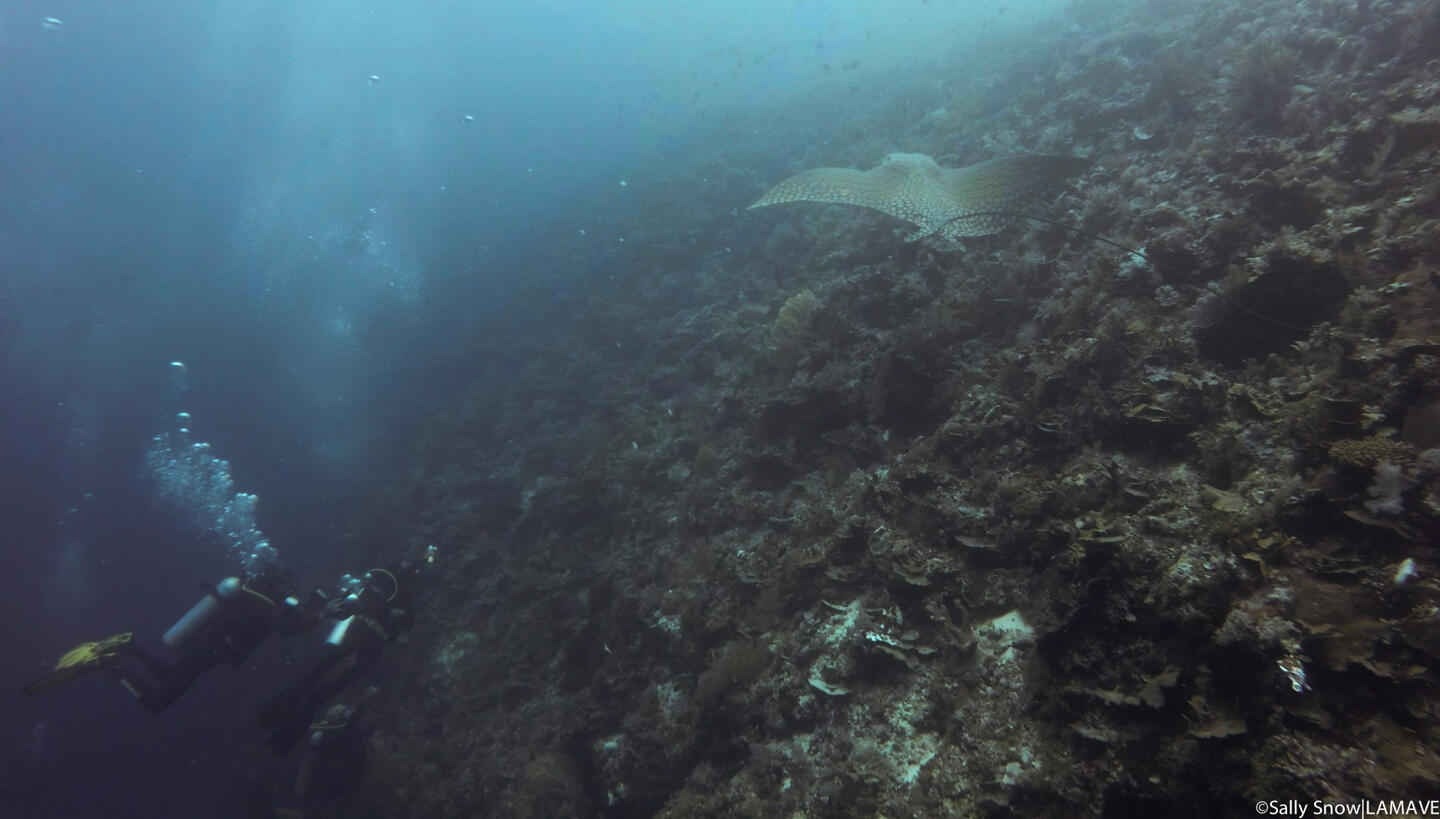
First sighting of Aetomylaeus vespertilio (ornate eagle ray) in Philippine waters
A lot of species of chondrichthyans can be found in Philippine waters, with the Indo-West Pacific having one of the most diverse and yet also some of the least well-known fauna. Several of these species are threatened by overfishing and other ways of exploitation. In 2003, at least 56 Philippine species of elasmobranches (subclass Elasmobranchii) were on the IUCN Red List.
Aetomylaeus vespertilio (shown above), commonly known as the ornate eagle ray, is considered a threatened species by the IUCN. The first live sighting of an ornate eagle ray in the Philippines was in the waters of Cagayancillo, Palawan, in April 2017. Before this, one was reported to have been in a fish market in Cebu City, and a specimen was said to be caught in Camarines Norte in 2010.
Known as the whale shark and locally called the butanding, Rhincodon typus (shown here) is one of the most famous chondrichthyans in the Philippines. Oslob, Cebu is a famous tourist spot due to the presence of whale sharks. Not only does the tourism culture degrade the coral reefs in the area, but the whale sharks themselves are also more prone to harm as well. Some were observed to have scars or abrasions, with others having their fin completely removed.
Last August 2018, a female whale shark was found in Tagum City, Davao del Norte, dying a few hours after discovery. Marine litter was discovered inside its stomach and left gills. Although not the cause of death, the presence of marine litter inside its body is a cause for concern and could threaten other organisms.
Actinopterygii
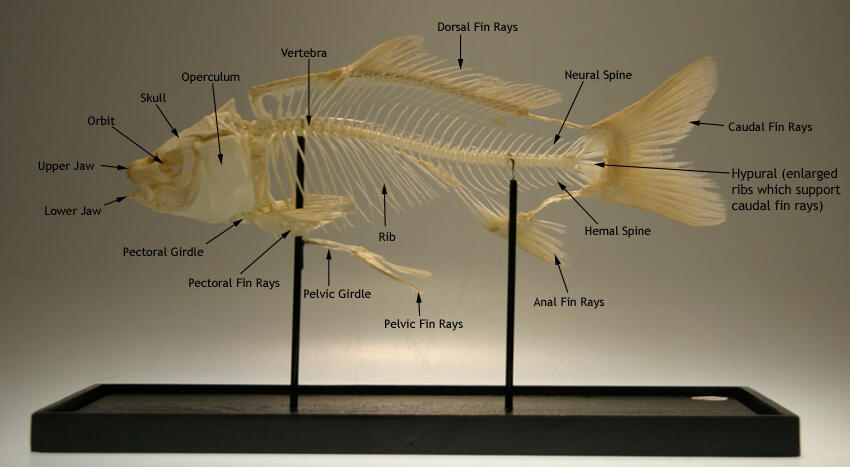
A subclass of class Osteichthyes (bony fish), Actinopterygii, also known as ray-finned fishes, has some 30,000 species, more than all the other vertebrate groups combined. Its sister clade is Sacropterygii, the lobe-finned fishes. Studies regarding fish are still far from being complete, and much is still left unknown.
Their name is derived from their fins supported by rays of bony spines, unlike the lobe-finned fishes. The main skeleton of a fish, whether made of cartilage (chondrosteans) or bone (neopterygians), has a backbone and a rib cage.
They possess a smooth-walled swim bladder, allowing them to adjust their buoyancy. This allows them to conserve energy by remaining still. Some species in low-oxygen environments have evolved alveolar lungs to adapt.
Most actinopterygians are oviparous and eggs are fertilized externally, although some species fertilize internally before shedding the eggs. Certain viviparous and ovoviviparous species exist as well.
Actinopterygians are known to be able to survive in a variety of conditions, with some species known to migrate to and from salt and fresh water habitats. They can tolerate temperature levels ranging from -1.8°C up to 40°C.
Examples of Actinopterygii
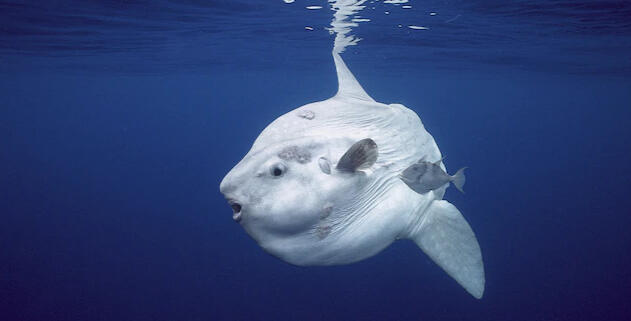
Mola mola, commonly known as the ocean sunfish
Actinopterygii can be divided into the two subclasses Chondrostei and Neopterygii (most extant fish). The largest actinopterygian is said to be Mola mola (shown above) of order Tetraodontiformes.
Mola mola can be found in temperate and tropical oceans. They can reach up to around 14 feet in length vertically and 10 feet horizontally, weighing up to 5,000 pounds (around 2268 kilograms). They are considered vulnerable species.
Actinopterygii in the Philippines
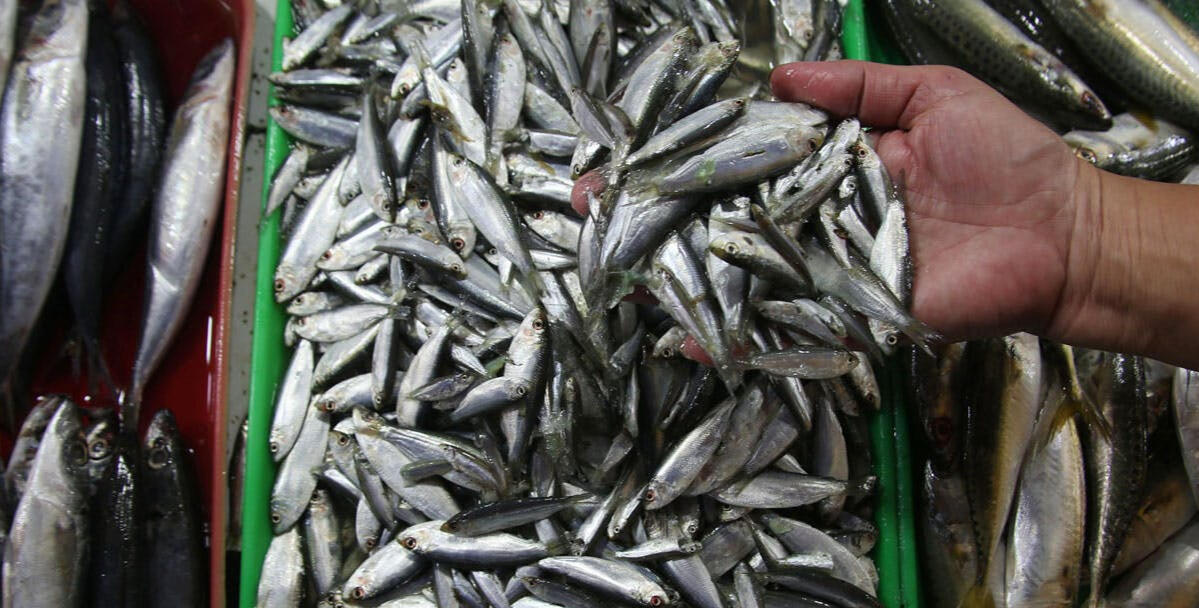
Sardinella tawilis being sold in a market in Quezon City
As an archipelago surrounded by water, there are plenty of actinopterygians in Philippine waters. The Philippines is the world's ninth largest producer of farmed fish, with over 1.6 million people working in the fisheries sector.
However, several fishing practices pose threats not only to the fish in the water but also to the surrounding environment, such as in areas with coral reefs. Dynamite fishing, for example, destroys not only the fish but also the whole food chain. This includes plankton and the corals the fish grow in. Compared to years ago, far fewer fish can be found in the same areas in the sea.
Sardinella tawilis (shown above), locally known as tawilis, is a species of genus Sardinella only found in the Philippines, specifically in Taal Lake, Batangas. Due to overfishing and other illegal fishing practices, tawilis is now considered as endangered in the IUCN Red List.